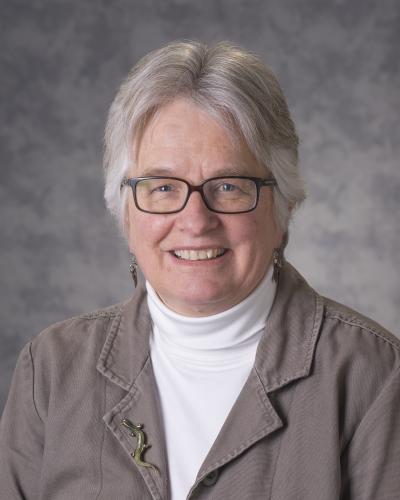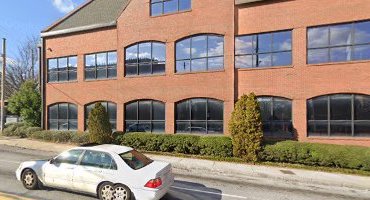Jan 31, 2023
Marion Usselman, principal research scientist at Georgia Tech’s Center for Education Integrating Science, Mathematics, and Computing (CEISMC) has been recognized as a Fellow by the American Association for the Advancement of Science (AAAS), the world’s largest multidisciplinary scientific society.
“I am incredibly honored and humbled to receive this award from an organization I have belonged to and admired since 1978,” said Usselman. “It is really nice to see that helping all types of students learn the joys of pondering and understanding the natural and engineered world is so valued by the scientific community.”
Usselman is being honored for her distinguished contributions to gender equity in universities and major contributions to curriculum and teacher professional development during her 26-year tenure at CEISMC. She is among more than 500 scientists, engineers and innovators spanning 24 scientific disciplines who have been elected as 2022 Fellows and among three Georgia Tech faculty in this year’s class.
“This is a truly well-deserved recognition of Dr. Usselman’s impressive track record of ground-breaking research on, and implementation of highly innovative K-12 STEAM curricula and pedagogy,” said CEISMC Executive Director Lizanne DeStefano. “Spanning computer science, engineering, mathematics and the sciences, Marion’s scholarship has focused on integrating cutting edge STEAM content with student-centered pedagogy in ways that engage diverse learners and maximize learning outcomes. For more than two decades, she has worked to translate the excitement and innovation of Georgia Tech research and innovation into public school classrooms throughout Georgia. Kudos to AAAS for celebrating her accomplishment!”
Usselman, who earned a Ph.D. in Biophysics from the Johns Hopkins University, joined academia in the bench sciences, first as a postdoctoral fellow at her doctorate alma mater, and then as a research fellow at Harvard Medical School. She chose to leave that aspect of the discipline so she could pursue her interests in improving education and access in the science, technology, engineering, and mathematics (STEM) fields at all levels, first at the University of North Carolina, Charlotte, before arriving at the Institute in 1996.
“Throughout my career, I have had several opportunities to lead teams of talented individuals as we developed an extensive research and implementation programs focused on multiple dimensions of STEM educational reform, primarily but not exclusively at the K-12 level,” explained Usselman, who also serves as CEISMC’s associate director for development and educational innovation. “These research thrusts generally began with small-scale, topic-focused projects and have grown into large, well-funded and multi-collaborator programs tasked by sponsors with developing rigorously tested models of STEM educational reform for national dissemination.”
Gender Equity in STEM
One of the first projects Usselman worked on focused on issues of gender equity in STEM as program manager for the multi-institutional National Science Foundation-funded project, Integrating Gender Equity and Reform (inGEAR). Usselman and her colleagues conducted an in-depth institutional self-assessment to examine the factors, including the structure of the educational programs and content delivery, that influenced the academic paths of women and minorities who chose to enroll at Georgia Tech and their career trajectories, particularly in engineering.
“At that time, women made up approximately 28% of undergraduates at Georgia Tech,” she said. “While doing the self-study, it became apparent that women actually did better than men at Tech in fields that were very male dominated. At that point I realized that equity did not require that equal numbers of people enroll in the field. Equity means that those of equal talent feel equally at home in the field.”
The impact of this NSF project and subsequent educational studies guided Usselman’s research endeavors to address the same issues in the K-12 space. “My team has spent the last 15-20 years designing curricular exemplars, based on well-established research on how people learn and factors that encourage a sense of belonging and identity,” said Usselman. “Our view is that good reform-based teaching that centers on diverse students’ motivational and multicultural needs is the primary driver of success in supporting and expanding all students’ access to careers in the STEM fields, particularly in engineering and computer science.”
University-K-12 Partnerships
A surefire way to pique K-12 students’ interests in the sciences and promote their career awareness is by surrounding them with role models. In 2000, Usselman conceived an idea and wrote a grant for NSF’s then new Graduate STEM Fellows in K-12 Education (GK-12) program that would bring Georgia Tech graduate students into high school classrooms as teaching interns with the goals of increasing graduate student leadership and teaching skills, improving K-12 STEM education, and developing and exploring the nature of partnerships between the Institute and K-12 schools. With $3.8 million in NSF funds, the Student and Teacher Enhancement Partnership (STEP) program placed 130 graduate teaching interns in local schools between 2001 and 2010.
During that time, Usselman, a co-principal investigator on the grant, met her now CEISMC colleague, Senior Research Associate Douglas Edwards, when she visited his engineering classroom in 2003 at Westlake High School. He was one of the teachers to receive a Graduate STEM Fellow.
“I have enjoyed being Marion’s collaborator, colleague, and friend over the past 20 years,” said Edwards. “Our collaboration led to the first and only Engineers Without Borders high school chapter to ever exist. When I think of her, I think of Mary McLeod Bethune’s quote, ‘our children must never lose their zeal for building a better world.’”
Innovative Curricula Implementation
Lessons learned from STEP about university-K-12 partnerships played an integral role in developing one of the more recent large and comprehensive partnerships, which included engineering-focused curriculum developed at Georgia Tech.
A collaboration between CEISMC, the Woodruff School of Mechanical Engineering, and the Griffin-Spalding County School System, AMP-IT-UP was a seven-year, $7.5 million NSF grant that introduced middle school students to STEM Innovation and Design courses that incorporated scientific practices and mathematical foundations into lessons that were tied to design challenges.
“Students who took the semester-long course during at least two of their years in middle school showed very significant gains in math and science Milestone test scores, as well as higher engagement and lower levels of math and science anxiety,” said Usselman, who served as principal investigator on the grant.
One of the key elements of making these types of partnerships work is the variety of experiences of the curriculum developers, researchers and educators involved. Jeff Rosen was a technology teacher at Wheeler High School when he first met Usselman in 2002. He became involved in the effort led by her and a colleague for Georgia Tech to become an Affiliate Partner of FIRST LEGO League, an international K-12 robotics competition program. Over their five-year collaboration, they doubled the number of students participating every year, with expansion plans that were directed specifically to attract underrepresented populations. Usselman recruited him to CEISMC in 2007 as a program director.
“From that time forward, Marion and I have worked on numerous curriculum development grants that at the heart were always targeting ways to support science learning for all students and to help overcome the stigma about who can or should do STEM,” said Rosen, who served as a co-principal investigator on the AMP-IT-UP grant. “Her science background and personal desire to make STEM applicable to all has been the cornerstone of the vision for a number of large National Science Foundation’s grants and she makes this work valued and enjoyable.”
Technology-Based Pedagogy
With curricular innovations comes the exploration of using some type of technology that can greatly impact the results of any intervention. For example, Georgia Tech School of Music Chair Jason Freeman and Georgia Tech Professor of Digital Media Brian Magerko partnered with Usselman and her team in 2013 when they were developing a new grant proposal around EarSketch, a web-based digital audio workstation they created in 2011. They wanted to study EarSketch’s impact on student learning and engagement when art and music are integrated in computer science high school courses. The project was funded by a $3 million NSF grant in 2014.
“I’ve been told that Marion has ‘the golden touch’ with funding proposals, in that a crazy high percentage of proposals she is involved in get funded,” said Freeman. “That’s probably true, but it misses the point of what makes Marion so incredible. These projects get funded because Marion has an uncanny ability to identify the big, pressing challenges in our educational system and figure out how, as researchers, we can tackle those problems to make a real, lasting impact. She is also an incredible mentor who is able to step into each project in just the right way, giving her colleagues the support they need while also trusting them to innovate in their own unique ways.”
CEISMC has continued to work for over a decade now on EarSketch-focused projects, that have included a $2.5 million NSF grant in 2016 in which CEISMC researchers created an introductory high school computer science course under the umbrella of a new framework called Student-Centered Computing (SCC). This course includes a year-long project, in which students can develop digital technology and programming skills as they research and design solutions for problems of their choice.
During a pilot of the course implemented by schools in Fulton and Gwinnet counties in 2017-2019, 14 classes with three teachers reached over 350 students. Participants showed increases in cognitive engagement, student agency, and an increase in their intent to continue in computing careers. With such success, two middle school courses were created, and the team is currently developing an SCC version of the Advanced Placement Computer Science Principles course.
“The ongoing SCC program has provided online professional development for over 150 teachers, with implementation in schools across Georgia,” said Usselman. “With generous support from Google, we’re now working to improve the user experience and to raise awareness of its availability nationally.”
By all accounts, Usselman has led an extraordinary career with a commitment to creating an educational system that is accessible to all learners with different perspectives, skills, and interests. Her research contributions have and continue to emphasize the importance of developing a highly skilled and diverse workforce of the future by increasing inquiry and experiential learning in K-12 schools, integrating STEM fields within the classroom, researching the barriers to transformative educational reform, and working with high needs and underserved schools and student populations.
—Joëlle Walls, CEISMC Communications



